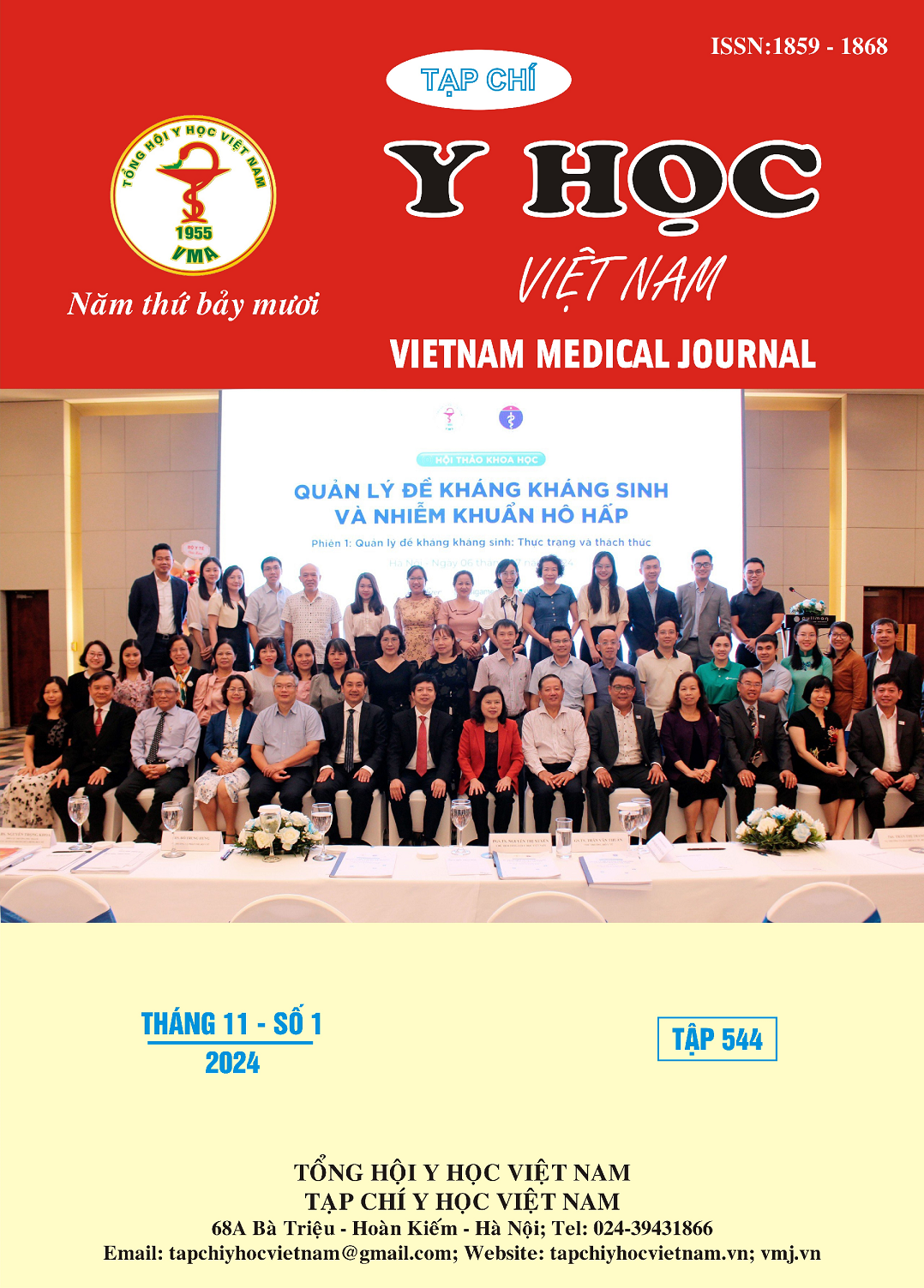NGHIÊN CỨU MỐI LIÊN QUAN GIỮA NỒNG ĐỘ PESINOGEN HUYẾT THANH VỚI TỔN THƯƠNG NIÊM MẠC DẠ DÀY TRÊN MÔ BỆNH HỌC
Nội dung chính của bài viết
Tóm tắt
Đối tượng và phương pháp nghiên cứu: Nghiên cứu cắt ngang được thực hiện tại DakLak từ tháng 03/2015 - 06/2018 trên 130 đối tượng từ 18 tuổi được chẩn đoán viêm dạ dày mạn bằng mô bệnh học. Tất cả bệnh nhân được nội soi dạ dày, sinh thiết để chẩn đoán mô bệnh học, xét nghiệm pepsinogen I, II huyết thanh. Kết quả: Trong nghiên cứu này nồng độ trung bình PG I là 57,43 ± 34,36 ng/ml, PG II là 15,83 ± 8,31 ng/ml. Nồng độ PG I ở nhóm có dị sản ruột 85,81 ± 71,34 ng/ml cao hơn nhóm không có dị sản ruột 55,07 ± 28,26 ng/ml với p < 0,001. Nồng độ PGI, PG I/II có xu hướng giảm theo mức độ viêm teo dạ dày trên mô bệnh học, tuy nhiên sự khác biệt chưa có ý nghĩa với p > 0,05. Nồng độ PG I/II ở nhóm viêm hoạt động là 3,82 ± 1,32, viêm không hoạt động là 3,84 ± 1,37, sự khác biệt không có ý nghĩa thống kê với P> 0,05. Không có ý nghĩa thống kê giữa mức độ viêm hoạt động với nhóm tuổi và giới. Kết luận: Nồng độ trung bình PG I và tỷ lệ PG I/II có xu hướng giảm tỷ lệ nghịch theo mức độ viêm teo; Nồng độ PG I ở nhóm có dị sản ruột cao hơn nhóm không có dị sản ruột ( P<0,01). Mối liên quan không có ý nghĩa thống kê giữa viêm dạ dày hoạt động với nồng độ PG I và tỷ lệ PG I/II. Ngưỡng tỷ lệ PG I/II ở bệnh nhân viêm teo nặng là 3,2 ± 0,71 cao hơn ngưỡng PG I/II Nhật Bản là < 3.
Chi tiết bài viết
Từ khóa
Viêm teo niêm mạc dạ dày, pepsinogen huyết thanh.
Tài liệu tham khảo
2. Graham D. Y., Nurgalieva Z. Z., El-Zimaity H. M., et al (2006). Noninvasive versus histologic detection of gastric atrophy in a Hispanic population in North America. Clinical gastroenterology and hepatology, 4(3):306-314.
3. Daugule I., Sudraba A., Chiu H. M., et al (2011). Gastric plasma biomarkers and Operative Link Aor Gastritis Assessment gastritis stage. European journal of gastroenterology & hepatology, 23(4):302-307.
4. Miki K., Morita M., Sasajima M., et al (2003). UseAulness oA gastric cancer screening using the serum pepsinogen test method. The American journal of gastroenterology, 98(4):735-739.
5. Dixon M. F., Path F. R. C., Genta R. M., et al. (1996). Classification and grading of gastritis: the updated Sydney system. American Journal of Surgical Pathology. 20(10): 1161-81.
6. Lê Quang Tâm, Bùi Hữu Hoàng (2012). Viêm loét DDTT và nhiễm Helicobacter Pylori ở BN dân tộc Ê Đê tại Bệnh viện tỉnh Đắk Lắk. Tạp chí Y học TP. Hồ Chí Minh. 16(2): 58-67.
7. Quach D. T., Le H. M., Hiyama T., et al (2013). Relationship between endoscopic and histologic gastric atrophy and intestinal metaplasia. Helicobacter, 18(2):151-157.
8. Wang X., Lu B., Meng L., et al )2-17). The correlation between histological gastritis staging- ‘OLGA/OLGIM’ and serum pepsinogen test in assessment oA gastric atrophy/intestinal metaplasia in China. Scandinavian journal of gastroenterology, 52(8):822-827.
9. Trịnh Tuấn Dũng, Mai Hồng Bàng, Tạ Long và cộng sự (2012). Nghiên cứu mối liên quan nồng độ Pepsinogen, gastrin huyết thanh và tổn thương mô bệnh học viêm dạ dày mạn. Tạp chí Y học thành phố Hồ Chí Minh, 16(2):178 – 183.
10. Vũ Thị Duyên, Vũ Trường Khanh (2020). Nghiên cứu nồng độ pepsinogen huyết thanh ở bệnh nhân viêm teo niêm mạc dạ dày trên nội soi theo phân loại Kimura - Katemoto. Tạp chí Khoa học Tiêu hóa Việt Nam, 58:3574-3578.


